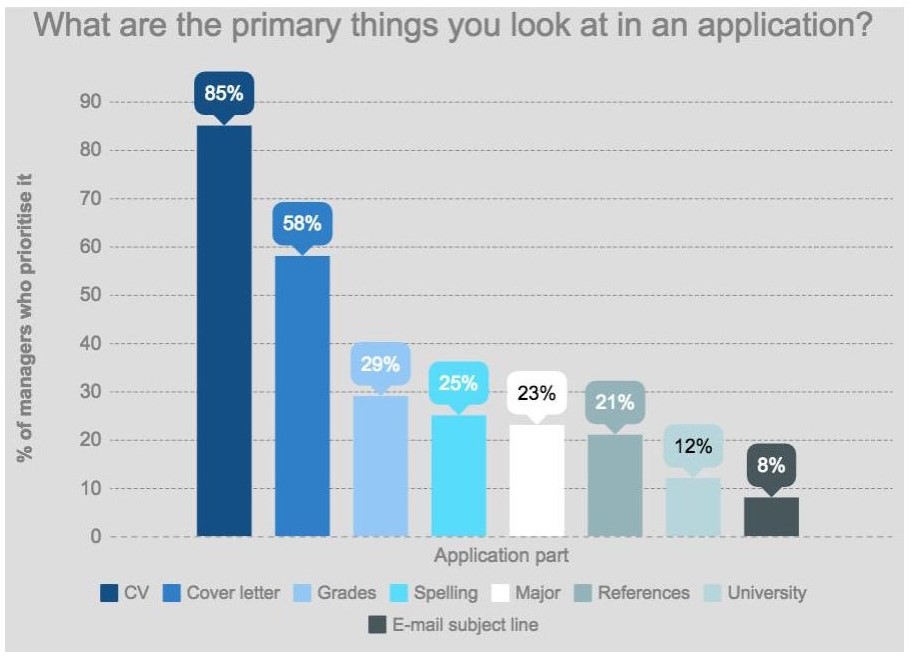APPENDIX B: EMPLOYMENT COMMUNICATION
Learning Objectives
This appendix focuses on the written component of the hiring process, along with the interview process. The advice given here represents a fairly broad consensus of employer expectations, but it can’t apply to all because each employer is unique in what they’re seeking from applicants. It’s like dating: Everyone has a unique list of preferences. If someone falls within the range of what you’re looking for and you fall within their range, then it might work out. The only way to know for sure that you’re both what the other is looking for is by networking, applying for jobs, and attempting job interviews. After examining strategies for job hunting, we’ll cover the résumé and cover letter-writing process with the goal of producing job application materials that will considerably increase your chances of getting an interview and landing your dream job.
After reading the information in this appendix, you will know about the following learning objectives:
B1: Research the job market to identify career opportunities and requirements and analyze job advertisements to align employment documents to the job postings
B2: Represent skills, knowledge, and experience realistically in a targeted and persuasive cover letter and résumé
B3: Adapt employment documents for Online Applications
A hiring competition involves written and oral “exams.” You must pass the written component (the cover letter and résumé) before you move on to the oral (the interview), and you must out-perform the competition in the oral to get the job. The oral component proves that you can carry a conversation, represent the company in face-to-face interactions with customers, and see eye-to-eye with managers and co-workers while conducting day-to-day operations in a personable manner. Representing you in your physical absence, your cover letter and résumé mainly assure employers that you have the experience and skills required to be successful in the job. They also prove whether you are literate and conscientious enough to protect the company’s reputation when writing on their behalf to customers and other stakeholders.
The chart below emphasizes the elements of applications that are most noticed by potential employers.
 Figure B.1: Employers indicate the information they consider most important in a job
Figure B.1: Employers indicate the information they consider most important in a job
application package (Hadicke, 2016).
Please note: Content for this section of the text has been partially adapted from Tom Bartsiokas’ and Tricia Hylton’s Communicating @ Work (2019), which was partially adapted from Jordan Smith’s original Business Communication for Success (2015) and other sources as indicated.
References
Bartsiokas, T. & Hylton, T. (2019). Communicating @ work. CC by 4.0 https://pressbooks.senecapolytechnic.ca/buscomm/ Adapted from Smith, J. (2015) Communicating for success. OER CC by 4.0.
Hadicke, G. (2016). What employers want in your application. Graduateland. https://graduateland.com/article/what-employers-want-application

